America isn’t just about skyscrapers and neon signs; it’s home to vast rugged plains and some incredible creatures you won’t find anywhere else. These animals have evolved and adapted to the diverse landscapes across the country, from the swamps of Florida to the deserts of the Southwest. Let’s explore the wild animals that are not only native to the U.S., they’re extraordinary.
1. The All-American Bison: More Than Just a Big Cow
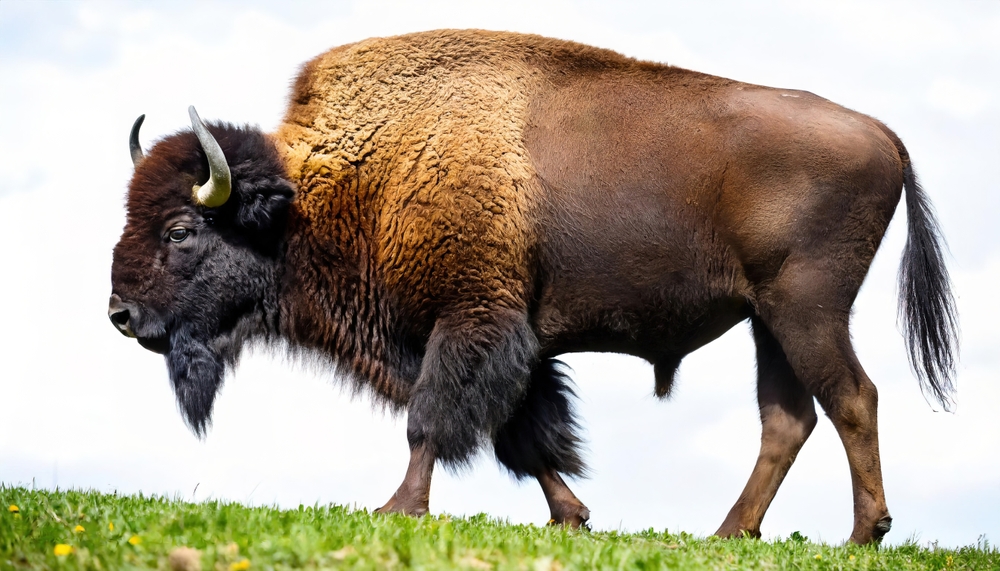
You’d be hard-pressed to see a symbol of the American frontier more iconic than the bison. These massive creatures once roamed the plains in herds so large they could blot out the sun—well, almost. With their shaggy coats and horns curved like the crescent moon, bison are true survivors. Despite near extinction in the 1800s due to overhunting, they’ve made a resilient comeback thanks to conservation efforts.
What’s unique about the bison isn’t just their size or speed. They play a crucial role in their ecosystem as natural lawnmowers, keeping the grasslands healthy by trimming vegetation. Their hooves stir up the soil, allowing plants to grow and providing food for other animals. Plus, they are a key part of Native American culture and history, symbolizing strength and unity. So next time you see a bison, remember, it’s not just a big cow—it’s a living piece of American history.
2. The Majestic Bald Eagle: America’s Winged Emblem

Nothing screams “U.S.A!” quite like the bald eagle soaring high above. According to History.com, the bald eagle was chosen as the national emblem in 1782 due to its striking appearance and representation of freedom and resilience. With a wingspan that can stretch over seven feet, they can spot prey from a mile away. Their keen eyesight is one of the sharpest in the animal kingdom, allowing them to snatch fish right out of the water with surgical precision. Once endangered due to DDT pesticide exposure, these eagles have impressively rebounded thanks to conservation laws.
But why the bald eagle? Well, those striking white heads and tails set against their dark brown bodies certainly make them stand out. Beyond their looks, bald eagles represent freedom and resilience—qualities deeply cherished in American culture. They’re also vital to their habitat, keeping fish and rodent populations in check. So, whether you spot one perched majestically on a branch or swooping through the sky, remember, they’re more than just a pretty face—they’re a symbol of the spirit of the U.S.
3. The Playful Sea Otter: The Ocean’s Furry Engineer
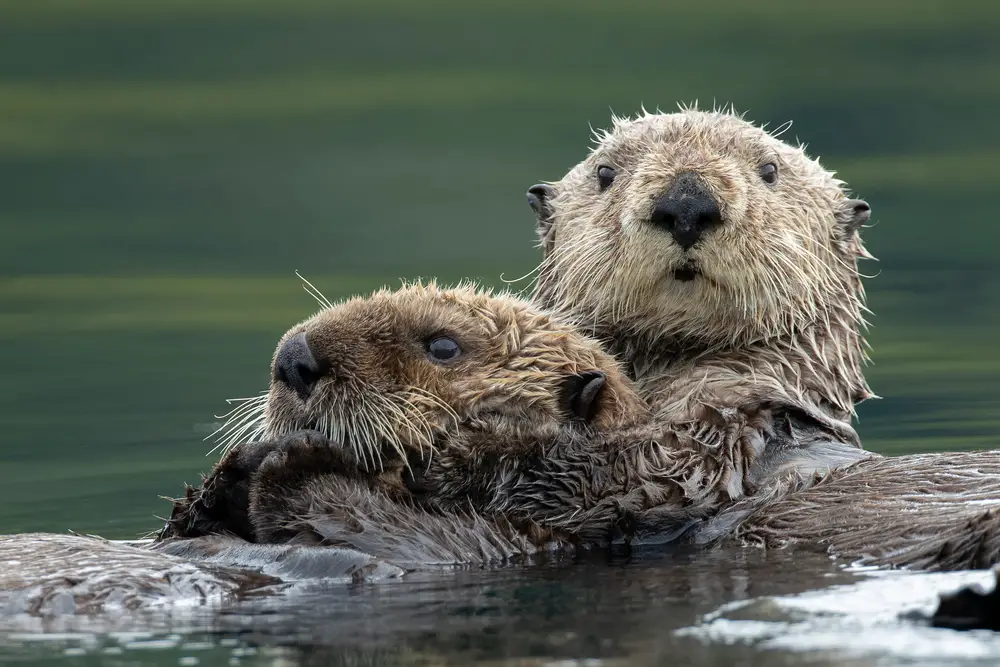
Meet the sea otter, the adorable critter that’s more than just a cute face floating in the ocean. Found along the Pacific Coast, these little guys have the densest fur in the animal kingdom, with over a million hair strands per square inch to keep them warm in cold waters. Unlike other marine animals that rely on blubber, sea otters use their dense fur as insulation. They are also one of the few animals known to use tools, employing rocks to crack open shellfish on their stomachs. As noted by Ocean Conservancy, sea otters play a crucial role in maintaining kelp forest ecosystems by controlling sea urchin populations, which helps preserve marine biodiversity.
Without otters, sea urchins would decimate these underwater forests, leading to a loss of habitat for numerous marine species. So, while they might look like they’re just floating around having a spa day, sea otters are critical to the ocean’s ecosystem balance. Plus, their playful antics and sociability make them a beloved symbol of marine conservation efforts.
4. The Pronghorn Antelope: The Speed Demon of the Plains
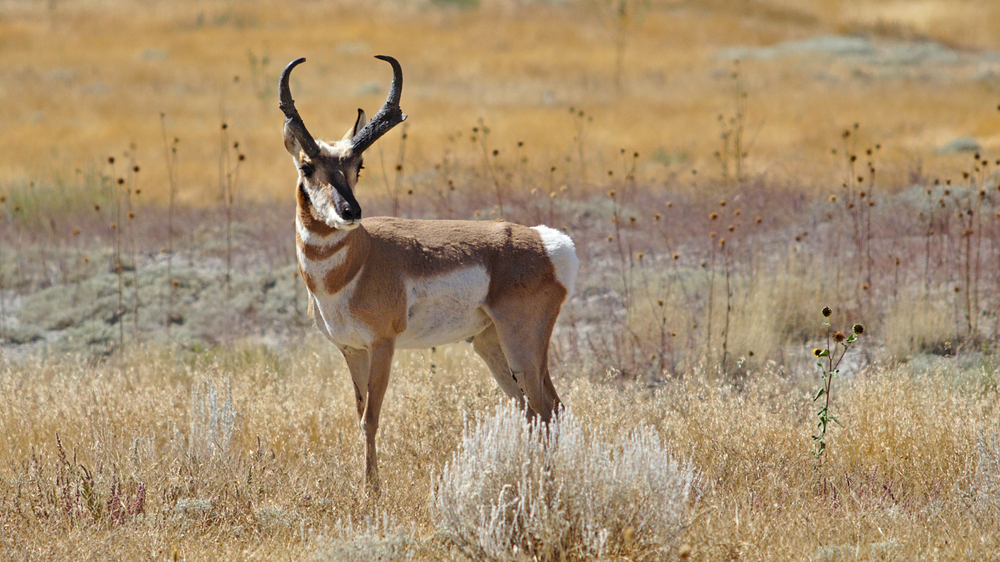
While the cheetah might be the fastest land animal, the pronghorn antelope is sprinting close behind and holds the title for the fastest in North America. Capable of reaching speeds up to 55 mph, these animals are built for the open plains, with long legs and a body designed for endurance running. Pronghorns are fascinating because, unlike other ungulates, they have forked horns that they shed annually. Interestingly, they’re not true antelopes but belong to a unique family all their own.
Pronghorns are not just speed demons; they’re also survivors of the Ice Age, with ancestors that roamed the continent alongside mammoths and saber-toothed cats. Their incredible speed was a defense mechanism against prehistoric predators that no longer exist. This unique evolutionary history makes them living relics of a bygone era. So, when you see pronghorns gracefully bounding across the prairie, know that you’re witnessing an extraordinary piece of America’s natural history.
5. The Curious Gila Monster: Nature’s Little Venom Factory
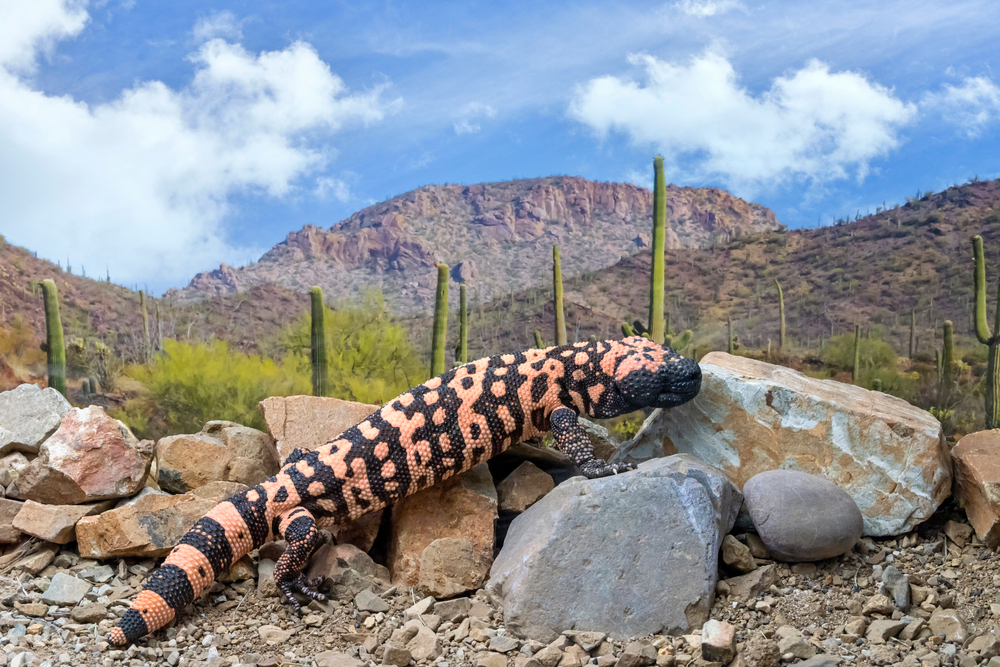
Down in the deserts of the Southwest lies a creature with a name as exotic as its appearance—the Gila monster. These lizards sport vivid patterns of pink, orange, or yellow against a backdrop of jet black, making them look like a piece of living art. But don’t let their beauty fool you; they’re one of the few venomous lizards in the world. Unlike snakes, they don’t inject venom through fangs. Instead, they chew their prey, letting venom seep in through grooves in their teeth.
What’s particularly fascinating about Gila monsters is how they’ve adapted to the harsh desert environment. They can go months without food or water, thanks to their slow metabolism and ability to store fat in their tails. Despite their intimidating reputation, they are rather reclusive and prefer avoiding humans. These creatures are a testament to the incredible adaptability of life in extreme environments. So, if you ever cross paths with a Gila monster, enjoy the view from a safe distance and appreciate nature’s ingenuity.
6. The Elusive Florida Panther: Ghost of the Everglades
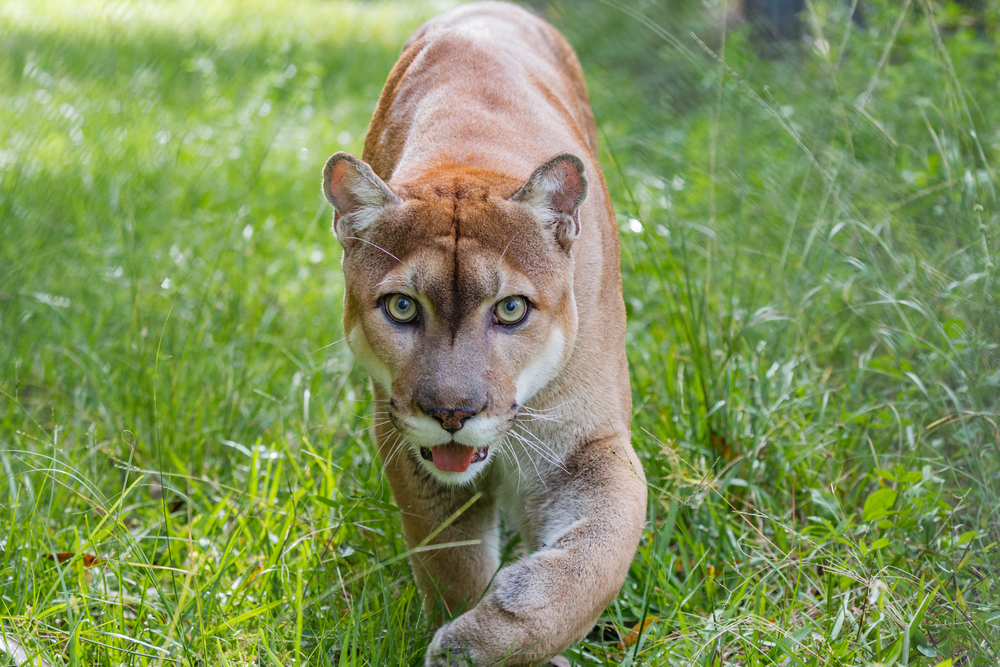
The Florida panther, a subspecies of cougar, is a true ghost of the American wilderness. Residing in the swamps and forests of Florida, these big cats are incredibly elusive, making sightings rare and special. With only about 120-230 individuals left, they are one of the most endangered mammals in the U.S. They sport tawny coats and long tails, perfectly adapted for stealth and agility in their dense, humid habitat.
What makes the Florida panther unique is its role as a top predator in its ecosystem, helping control the populations of deer and wild hogs. They face numerous threats, from habitat loss and vehicle collisions to inbreeding due to their small population size. Conservation efforts are ongoing, with wildlife corridors being created to connect isolated populations and reduce roadkill incidents. Seeing a Florida panther in the wild is a reminder of the delicate balance of nature and the importance of preserving these majestic creatures for future generations.
7. The Quirky American Woodcock: The Timberdoodle’s Dance
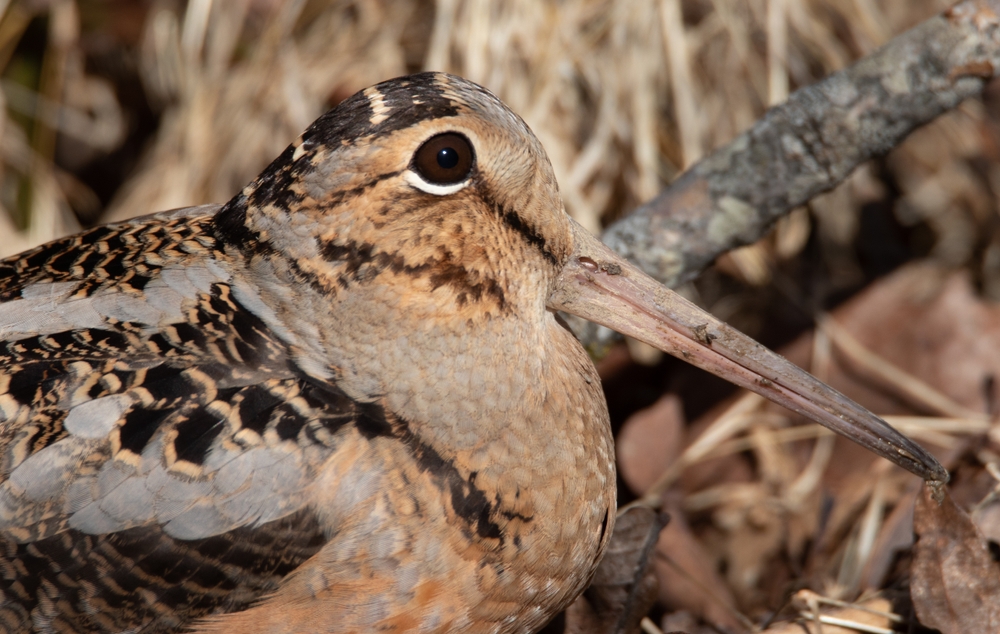
The American woodcock, or “timberdoodle” as it’s affectionately known, is a bird with some serious dance moves. Found in the eastern U.S., this elusive bird is best known for its peculiar “sky dance,” a courtship display where males spiral dramatically up into the sky before zigzagging back down. With their large eyes set back on their heads and a long, slender beak, they’re perfectly adapted for life in dense underbrush.
Their unique adaptations go beyond just looks. Woodcocks have a remarkable ability to sense and catch earthworms underground using specialized nerve endings in their beak. They can even twist their long bills to snag the worms hiding in the earth. While the woodcock’s dancing skills might steal the show, it’s their specialized hunting techniques and cryptic coloration that make them a marvel of avian adaptation. So, next time you’re in the woods, keep an eye out for the timberdoodle’s spectacular dance at dusk.
8. The Colorful Eastern Indigo Snake: The Serpent of the Southeast
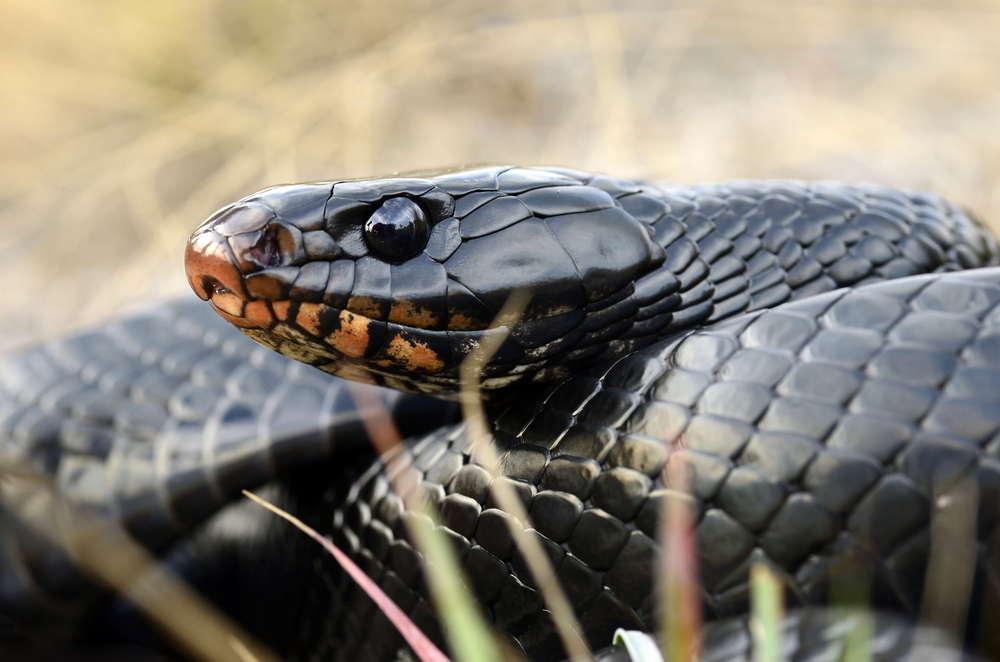
Meet the eastern indigo snake, the longest native snake in the U.S., stretching up to nine feet of deep, iridescent blue-black scales. This non-venomous snake is a sight to behold as it glides through the longleaf pine forests and swamps of the southeastern U.S. Known for their docile nature, indigo snakes are a top predator in their ecosystem, feasting on a variety of prey, including venomous snakes like rattlesnakes.
What makes the eastern indigo snake unique isn’t just its striking appearance. It’s also a keystone species, meaning its presence is crucial to maintaining the ecological balance of its habitat. Unfortunately, habitat loss and fragmentation have led to declines in their population. Conservationists are working to protect these snakes by preserving their habitats and reintroducing them into areas where they’ve disappeared. Spotting an indigo snake in the wild is like catching a glimpse of an ancient, living piece of the American landscape.
9. The Enigmatic Hellbender: America’s Largest Salamander
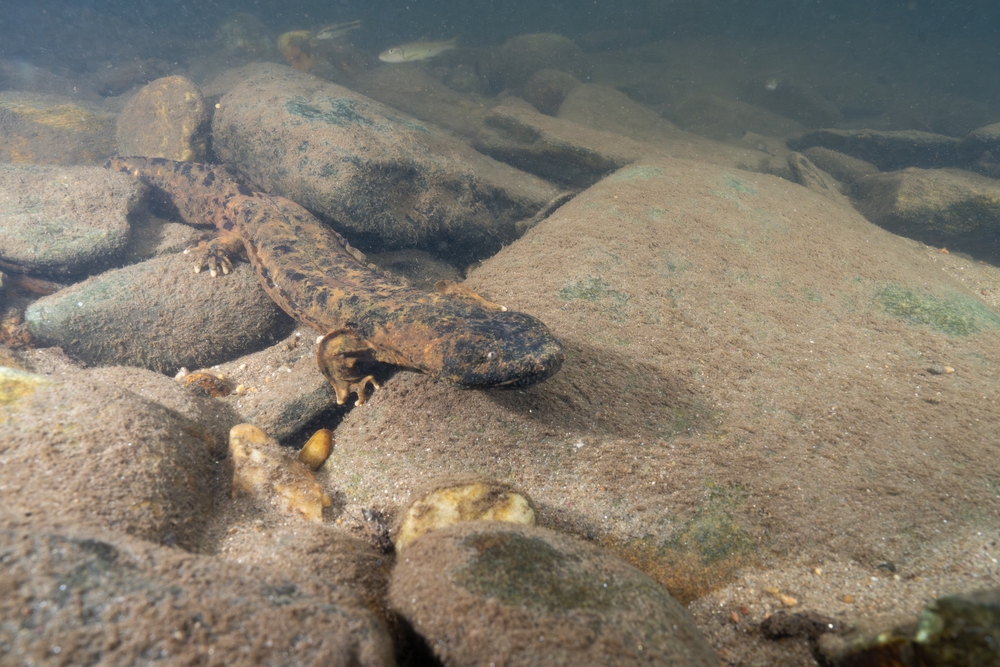
Beneath the clear, rushing streams of the Appalachian Mountains lies the hellbender, a giant salamander that looks like it leaped straight out of the age of dinosaurs. Known for their large, flat bodies and loose, wrinkly skin, these amphibians can grow up to two feet long. Hellbenders are aquatic and spend their lives under rocks in fast-flowing, clean water, making them excellent indicators of the health of freshwater ecosystems.
Their wrinkly skin isn’t just for looks; it helps them absorb oxygen from the water, allowing them to stay submerged indefinitely. Hellbenders are elusive and mostly active at night, hunting crayfish and other small aquatic creatures. Sadly, they face threats from habitat destruction, pollution, and disease, leading to declining populations. Efforts are underway to monitor their populations and restore their habitats, highlighting the importance of conserving these unique and ancient creatures.
10. The Resilient Red Wolf: The Comeback Canid
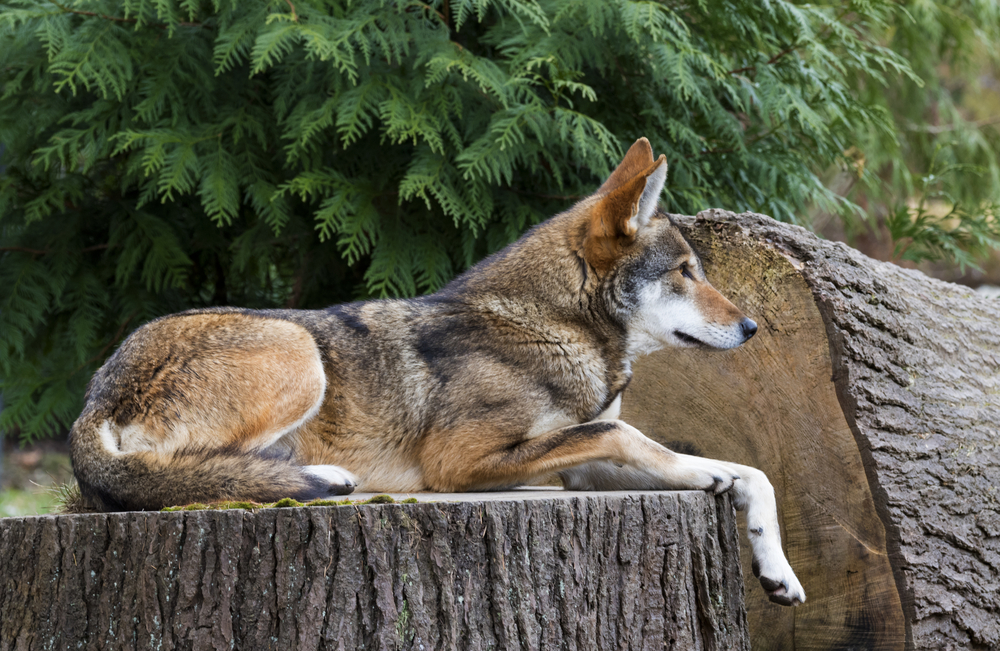
The red wolf, a critically endangered species, roams the wild landscapes of North Carolina. Smaller and slimmer than their gray wolf cousins, red wolves sport a striking coat of red, brown, and black. Once declared extinct in the wild, these resilient canids have been reintroduced through captive breeding programs and careful management. They now represent one of the world’s most successful predator reintroduction stories.
Despite their success, red wolves continue to face challenges, including habitat loss and interbreeding with coyotes. These wolves play a key role in their ecosystem by controlling prey populations and helping maintain a balanced environment. Conservationists are striving to protect and expand their habitat, ensuring the red wolf’s place in the wild. Observing a red wolf in its natural habitat is witnessing a living testament to resilience and the power of conservation efforts.
11. The Charming Key Deer: Tiny Giants of the Florida Keys
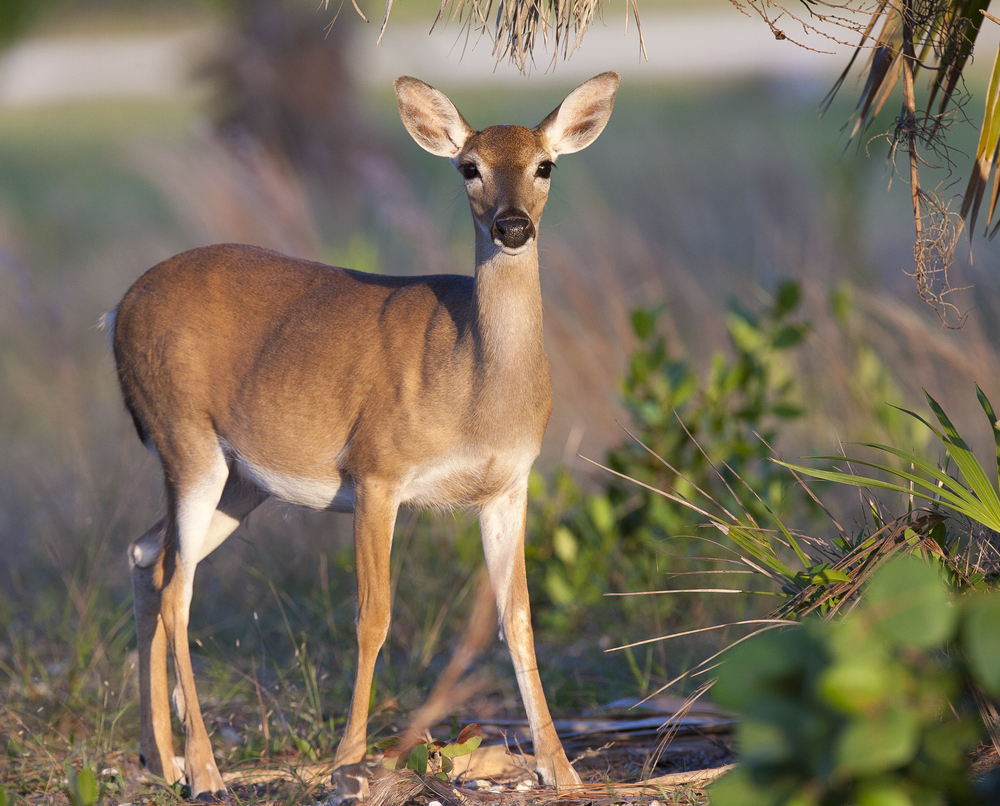
Down in the balmy Florida Keys, you’ll find the charming Key deer, the smallest subspecies of white-tailed deer. These diminutive creatures are like miniaturized versions of their mainland cousins, standing only about three feet tall at the shoulder. Their petite size is an adaptation to the limited resources on the islands they call home. Unlike their skittish relatives, Key deer are known for their curious and docile nature, often venturing close to humans.
What makes the Key deer unique is their fascinating relationship with their island environment. They can swim between islands in search of food and mates, showcasing their remarkable adaptability. However, they face threats from habitat loss, car collisions, and rising sea levels due to climate change. Conservation efforts include habitat protection and the establishment of wildlife corridors to ensure these tiny giants continue to thrive in their island paradise.
12. The Mysterious American Marten: Forest Phantom
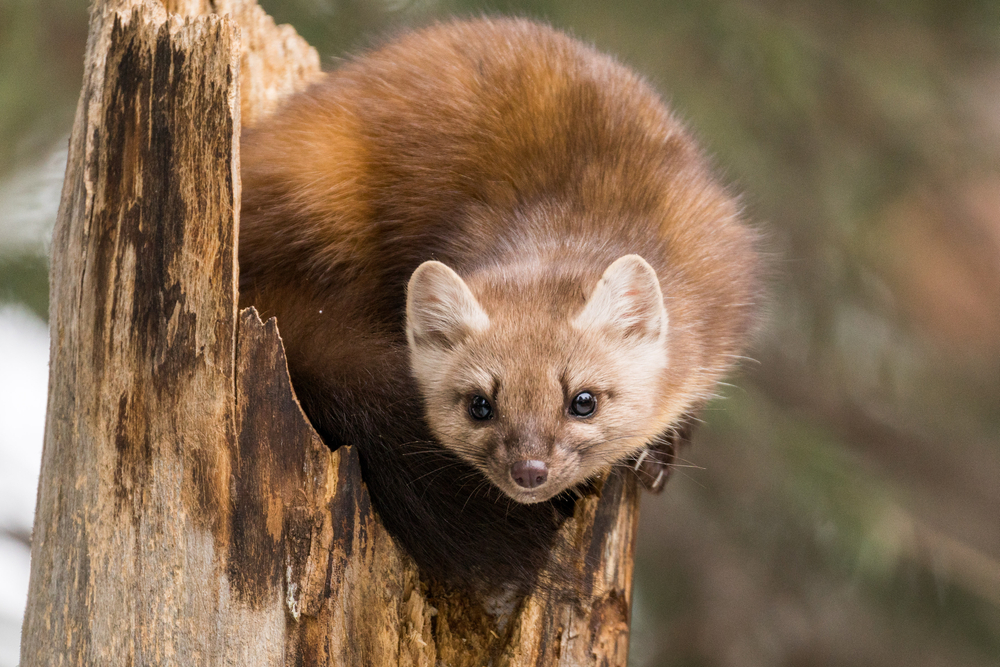
Deep within the dense forests of the northern U.S. dwells the American marten, a small but ferocious predator often referred to as the “forest phantom.” With sleek, slender bodies and bushy tails, martens are perfectly adapted for life in the treetops. They are skilled climbers and can leap gracefully from branch to branch in pursuit of prey like squirrels and birds.
Martens play a crucial role in maintaining the balance of their forest ecosystems by controlling rodent populations. Their elusive nature and preference for remote, undisturbed habitats have made them a symbol of pristine wilderness. However, habitat destruction and fragmentation have led to declines in their population, making conservation efforts important to their survival. So, if you ever find yourself in the deep woods, keep an eye out for the elusive American marten, a true testament to the beauty of untouched nature.
13. The Audacious Black-Footed Ferret: Prairie Dog’s Nightmare
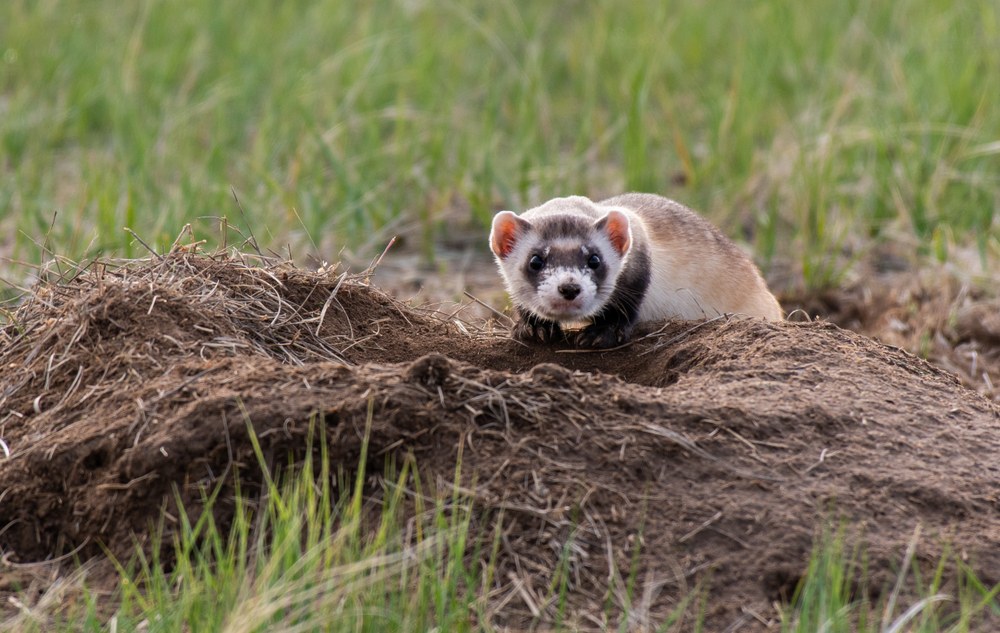
The black-footed ferret is a small but fierce carnivore of the Great Plains, known for its distinctive black mask and feet. These ferrets are nocturnal hunters with a specialized diet, primarily preying on prairie dogs. Once thought to be extinct, they were rediscovered in the 1980s and have since been the focus of intensive conservation efforts, including captive breeding and reintroduction programs.
What makes the black-footed ferret unique is its dependence on prairie dog colonies for survival. They rely on these rodents not only for food but also for their burrows as shelter. This specialized relationship highlights the importance of conserving interconnected ecosystems. Although challenges remain, including habitat loss and disease, the black-footed ferret’s story is a testament to the power of conservation and the resilience of nature. Spotting one in the wild is a rare and rewarding experience.
14. The Spotted Florida Manatee: The Gentle Giant of the Rivers
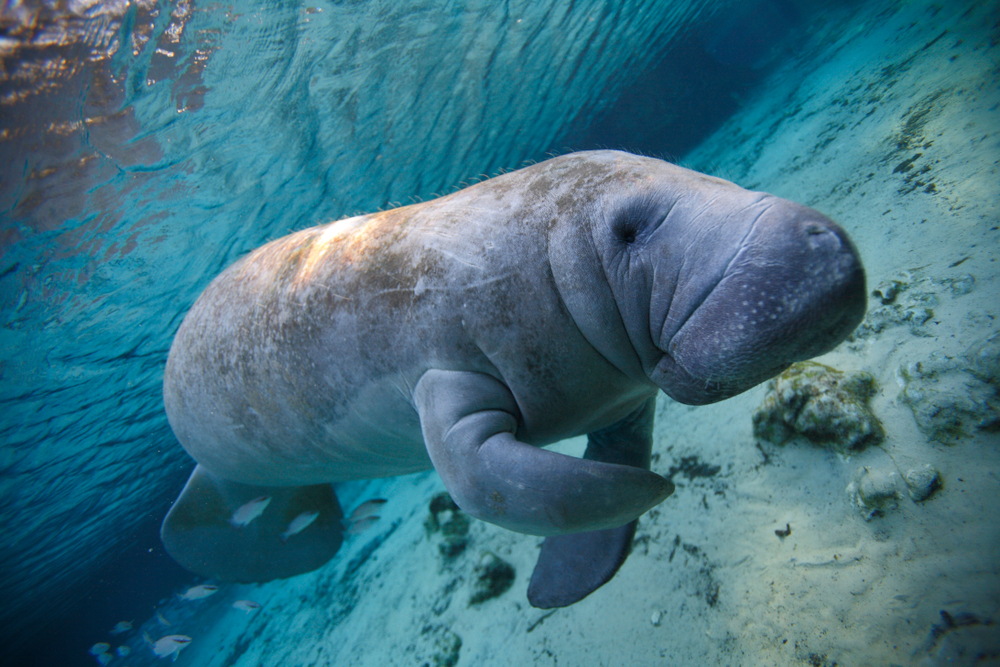
In the warm waters of Florida’s rivers and coastal areas, the Florida manatee glides gracefully like an underwater elephant. These gentle giants, known for their round, paddle-like tails and whiskered snouts, can reach lengths of up to 13 feet. Manatees are herbivores, spending much of their day grazing on seagrass and aquatic vegetation. Despite their massive size, they are surprisingly graceful swimmers, often seen cruising along at a leisurely pace.
What makes the Florida manatee unique isn’t just its size and gentle nature. They play a crucial role in their ecosystem by maintaining healthy seagrass beds and aquatic vegetation. However, they face numerous threats, including boat collisions, habitat loss, and cold stress. Conservation efforts include boat speed restrictions and habitat protection to ensure the survival of these beloved creatures. Encountering a Florida manatee in the wild is a magical experience, offering a glimpse into the delicate balance of aquatic ecosystems.
15. The Vibrant Painted Bunting: The Rainbow of the Bird World
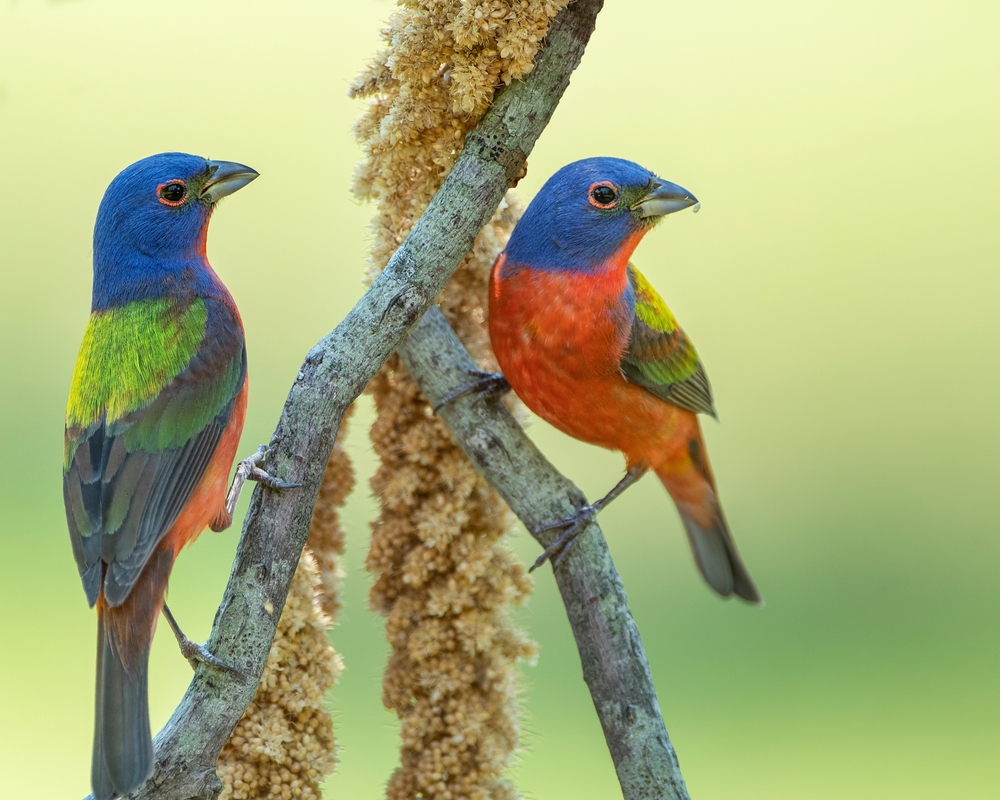
Finally, let’s talk about the painted bunting, often dubbed the “most beautiful bird in North America.” These small songbirds are a riot of color, with males sporting a breathtaking combination of blue, green, red, and yellow plumage. Found in the southeastern U.S. during the breeding season, they prefer habitats like woodland edges and shrublands. Their vibrant colors and melodious songs make them a favorite among bird watchers.
But the painted bunting is more than just a pretty face. Their presence indicates a healthy ecosystem, as they rely on a variety of native plants and insects for food. Unfortunately, habitat loss and illegal trapping for the pet trade have impacted their populations. Conservationists are working to protect their habitats and educate the public about their ecological importance. Spotting a painted bunting is like seeing a rainbow take flight, a true celebration of the natural beauty found only in the U.S.
